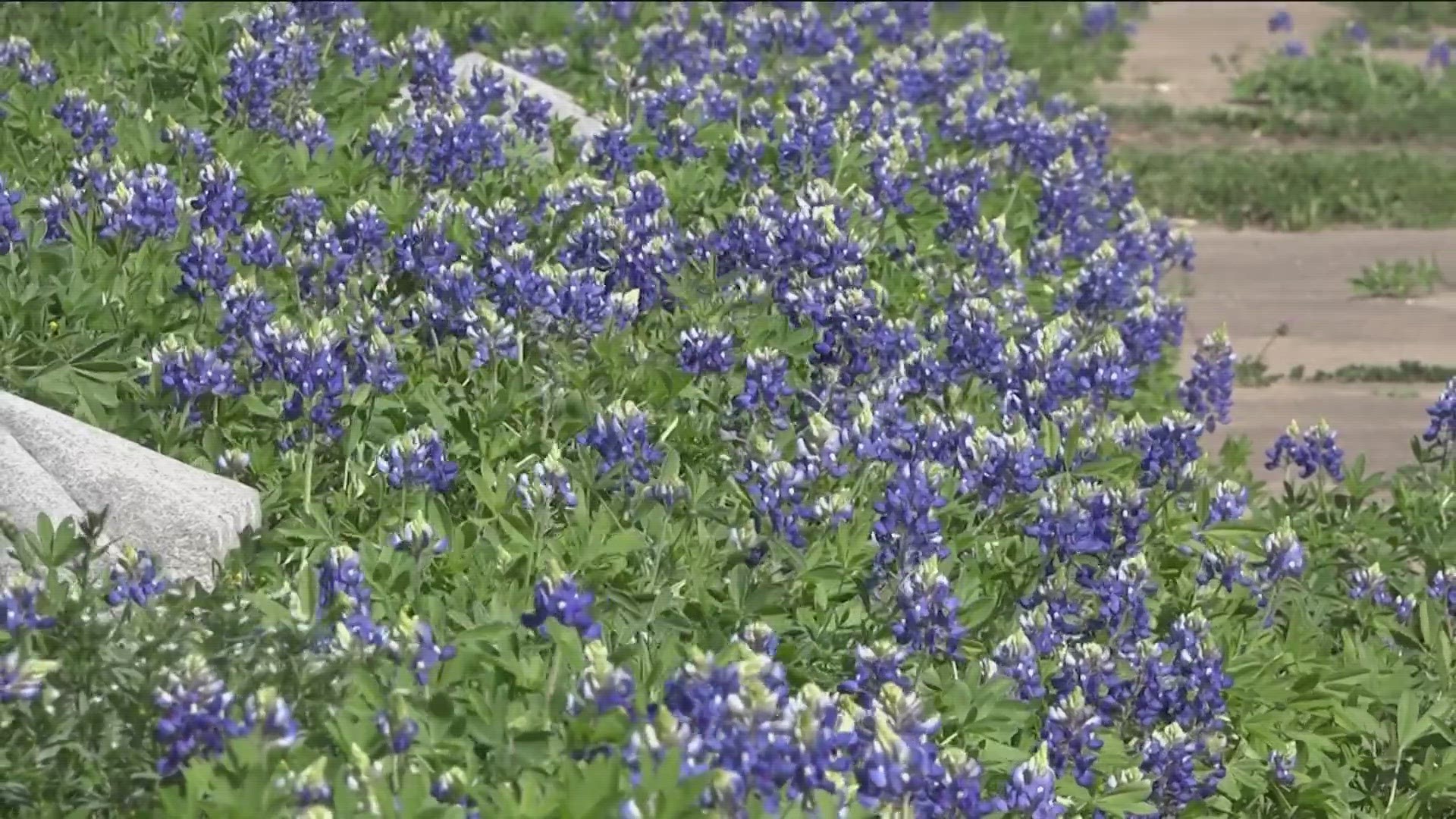AUSTIN, Texas — Experts at the Lady Bird Johnson Wildflower Center predict the 2023 wildflower season in Central Texas will be “especially lush.”
“I think it’s going to be an above-average spring, particularly when it comes to bluebonnets,” Andrea DeLong-Amaya, the center’s director of horticulture, said in a release. “We had good fall rain when the seedlings were just starting to come up, and that continued through the winter.”
Usually, people visualize bluebonnets in a sea of grass. But Leslie Uppinghouse with the Wildflower Center said if you look closely, they're usually along the highway, in the gutters or in ditches. They don't take too much to thrive, and they like the poor soil.
Even the drought most of Texas experienced last summer might prove advantageous for our state’s most iconic wildflowers.
“The drought may have caused some grasses to die back,” DeLong-Amaya said. “That opens up soil space for bluebonnets and other spring-blooming annuals to grow.”
The cold temperatures we experienced last December also helped. Uppinghouse said when it's cold, the flower focuses all its energy producing the seed. That allows the flower to stay there a bit longer and, when it blooms, the flower lasts longer.
"If it was really, really hot, it's going to be stressful to the plant," Uppinghouse added. "They'll flower really fast and then be done very quickly. But with these fluctuating temperatures, the hope is that we'll get to squeeze out that bluebonnet season a little bit longer."
According to the Wildflower Center, there are five species of “bluebonnets” native to Texas. The most common, Texas bluebonnet (Lupinus texensis), typically peaks in Central Texas in early April, but the center said we could see some a bit earlier this year.
And this year, January and February temperatures were significantly warmer statewide in 2023 than the previous year.
“The warmer it is, the earlier things start to bloom,” DeLong-Amaya said.
Bluebonnets have already been spotted on roadsides near city centers, where the hustle and bustle of daily life generates radiant heat. The Wildflower Center said its facility is relatively insulated, so you’ll have to wait a bit longer – probably until mid-March – to see large swaths of blue in its gardens.
Uppinghouse said with sporadic rain, the hope is bluebonnet season last a little longer, past the first week of April.
Mountain laurel (Sophora secundiflora), Carolina jessamine (Gelsemium sempervirens) and Mexican plum (Prunus mexicana) are currently in bloom at the Wildflower Center.
And if you're curious why we have so many flowers along Texas highways, TxDOT's Wildflower Program sows native seed because they're easier to maintain than grass. They're also beautiful to look at.
For more information about the 2023 wildflower season, visit the Wildflower Center’s Texas Wildflower Central webpage.

